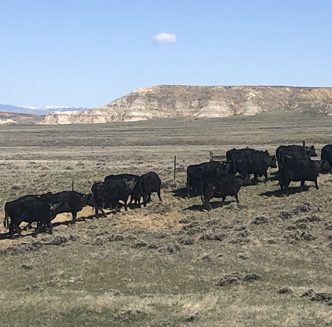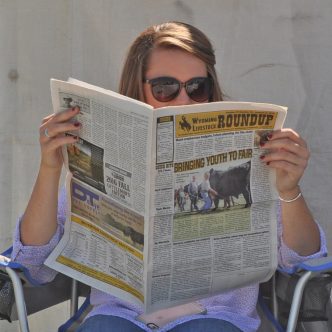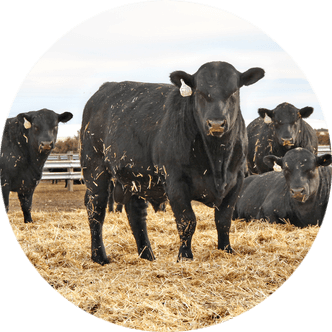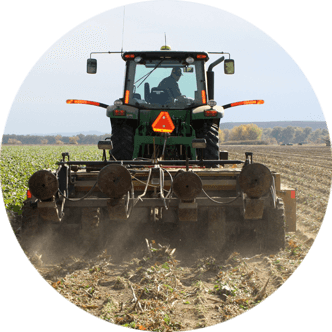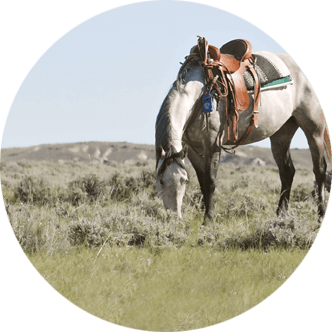Experts urge producers to develop a large animal preparedness plan
When a disaster is on the horizon, timely evacuation can become that much more challenging for owners whose horses and livestock can’t simply squeeze into the back seat. These animals often depend entirely on their owners to shield them from the elements within their pasture, so having a proper plan in place is vital for their safety.
Dr. Kyle Johnson, clinical assistant professor at the Texas A&M College of Veterinary Medicine and Biomedical Sciences, offers insight into disaster risks and preparedness methods for large animal owners.
The threat of wind, water and wildfires
Natural disasters which can impact horses and livestock include seasonal concerns like extreme summer heat and winter ice, as well as sudden events like hurricanes, tornadoes, floods and wildfires.
Any storm with strong winds brings the threat of flying debris.
“When airborne, this debris can cause traumatic injuries such as lacerations and puncture wounds to horses and livestock,” Johnson said. “These high winds can also cause barns, shelters and other structures to collapse.”
Flooding brought on by a storm’s heavy rain is another major threat for large animals exposed to the elements.
“If an animal is forced to stand in floodwaters because it is confined to a stall or a flooded pasture, it can suffer from a variety of injuries, including severe dermatitis, pneumonia and gastrointestinal or neurological disease – collectively known as submersion injury,” Johnson said. “Floodwater can also be heavily contaminated with a variety of substances, such as petroleum products, agricultural and industrial chemicals, pesticides and bacterial organisms like E. coli.”
Completing nature’s triple threat against horses and livestock is the potential harm brought by wildfires.
“When these animals inhale the smoke from wildfires, it can cause irritation of their eyes and lungs,” Johnson said. “Animals may cough, have increased respiratory rates and nasal discharge. Fires can also destroy or contaminate any available forage for grazing animals. In these cases, animals will either need to be moved or high-quality forage will need to be delivered to them.”
“At times like these, proper animal identification is critical, as it makes returning these animals to their owners and pastures much easier after flood waters have receded and fires have been extinguished,” Johnson added.
Methods of large animal identification include microchipping, ear tags, plastic neck bands, branding and tattoos.
Thinking ahead
Simply deciding to evacuate horses or livestock isn’t enough. Having a safe place to go is also a vital part of a preparedness plan. Furthermore, knowing how to get there and having alternate routes can also be critical to an effective evacuation.
“A vital first step in any evacuation is the ability to quickly and safely load horses into a horse trailer,” Johnson said. “Practice makes perfect, so practicing loading a horse can be helpful for when you must leave. It’s also important to ensure the trailer is regularly maintained.”
A plan is merely an idea unless it is written down. Copies should be made and stored both on-farm and in alternate – but known and accessible – locations. It should also be rehearsed, even if only briefly, and everyone should have a thorough understanding of the plan and know their role.
Emergency kit preparation
Companion animal owners are encouraged to plan ahead in the event an evacuation might be needed by creating an emergency “go kit” of necessities for their pets. Having the same kind of kit in the event one may need to evacuate large animals will make the process easier as well.
An emergency kit for large animals should contain enough supplies to last at least 72 hours and possibly up to two weeks.
“Water is arguably the most important part of an emergency kit,” Johnson said. “An adult horse needs roughly six to 10 gallons of fresh water per day. As such, a kit should include at least three days’ worth of water per horse, with enough feed to last one to two weeks.”
Additional emergency kit materials include registry paperwork, copies of medical records, first-aid supplies, identification photographs, feed and water buckets, extra halters and lead ropes, cleaning supplies and medications.
Pre- and post-disaster resources
Before disaster strikes, an owner’s best preparation resource is their regular veterinarian, who can provide copies of important documents and ensure horses are properly vaccinated and in good health.
“It is important for horse owners to know their neighbors or, if the horse is kept in a boarding barn, the barn manager and other boarders at the facility,” Johnson said. “These relationships can promote mutual aid when disaster strikes.”
There are also a variety of resources available for members of the public to obtain accurate and up-to-date information about disasters which may impact their area, including automated emergency alert systems in the form of texts, e-mails or apps.
Knowing how weather may affect one’s property and having a plan in place are the best ways to protect horses and herds and to stay ahead of the chaos.
“As Dr. Deb Zoran, director of the Texas A&M Veterinary Emergency Team, says, ‘Hope is not a plan.’ Owners should plan for disaster, discuss their plan with others, prepare their emergency kits and be ready to act,” Johnson concluded. “With disasters becoming more frequent and catastrophic, it’s not a matter of if, but when.”
Pet Talk is a service of the Texas A&M University’s College of Veterinary Medicine and Biomedical Sciences. This article was originally published on Aug. 7.

